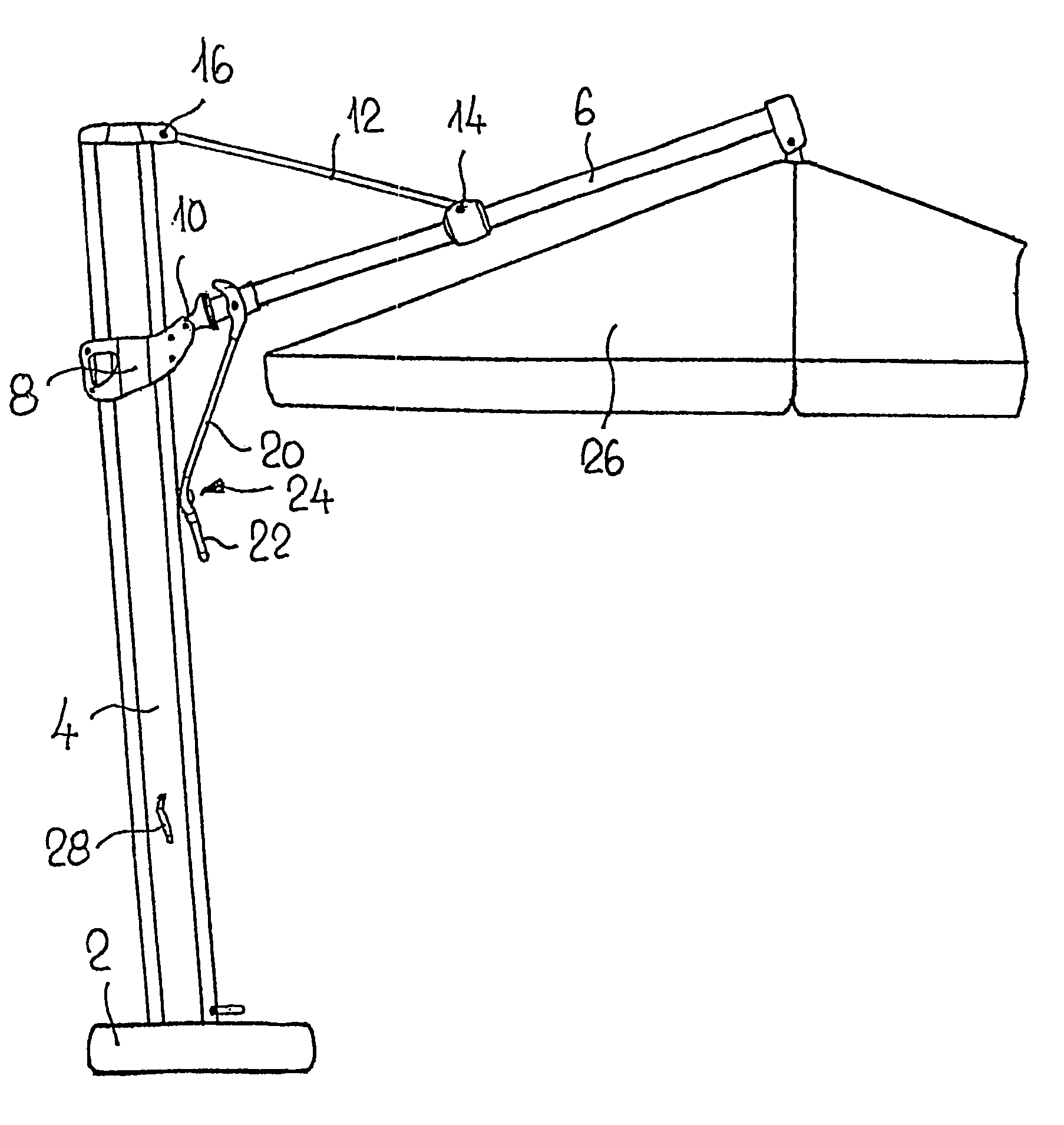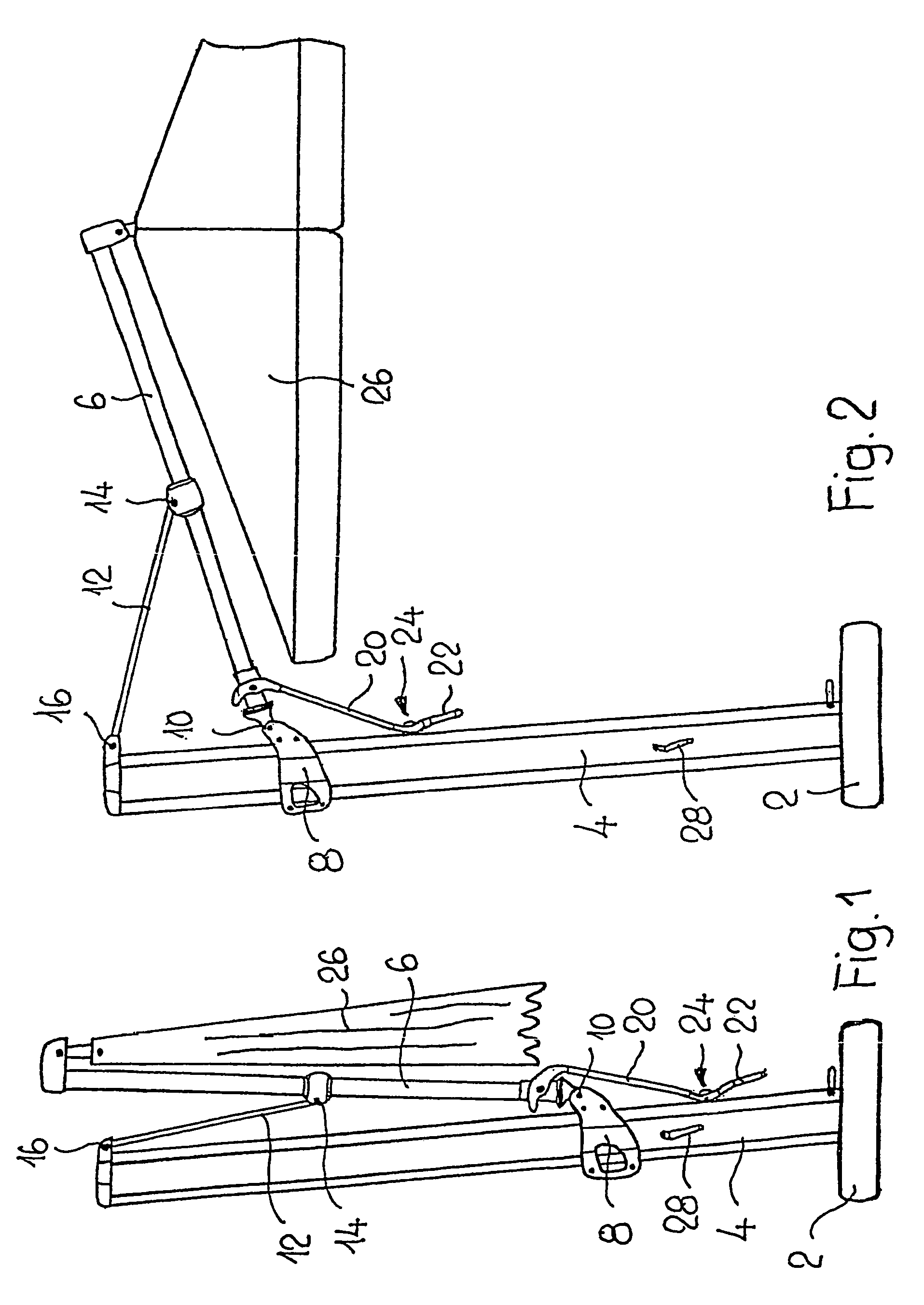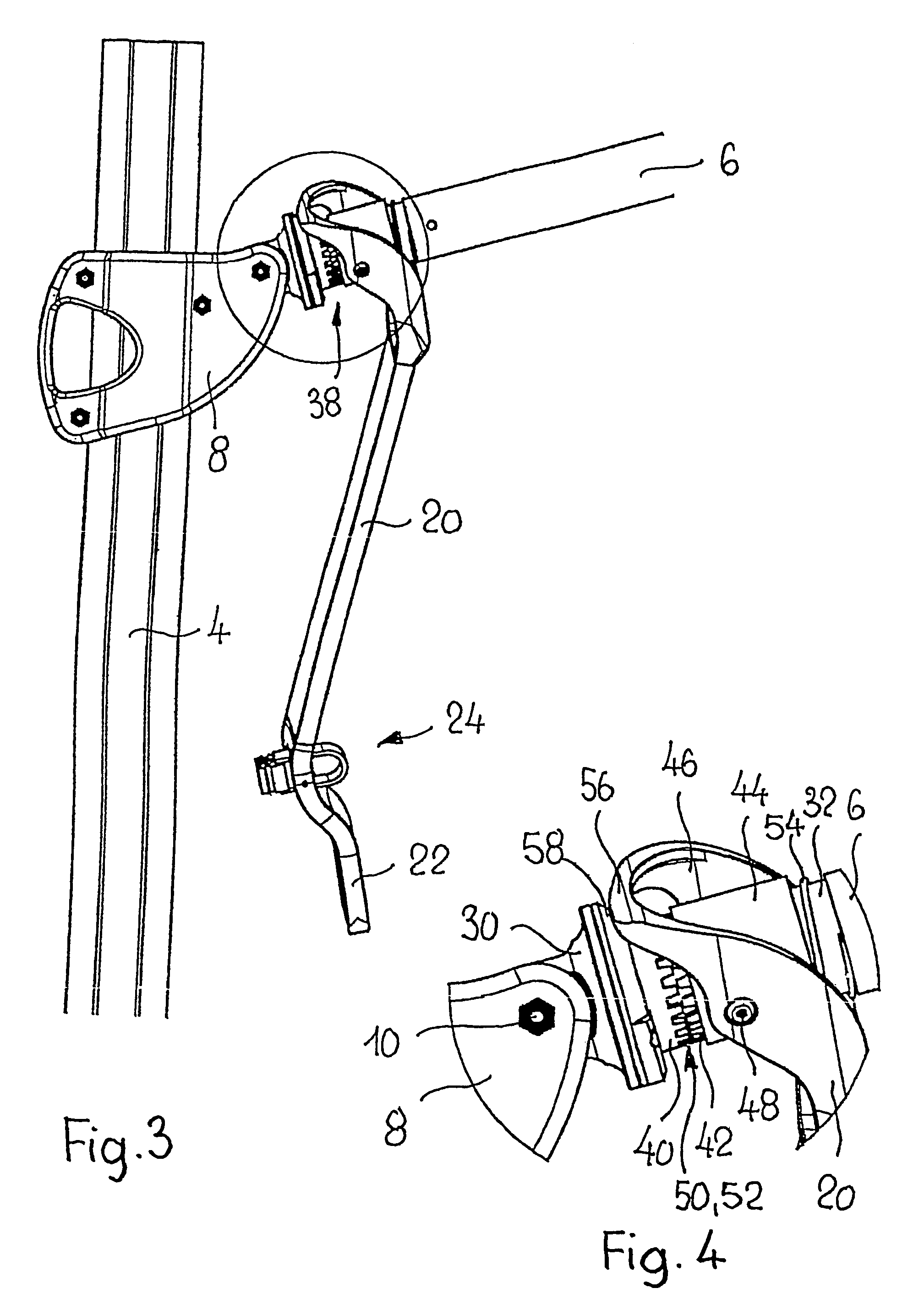Extension arm for a free arm parasol, pivotably arranged on a carrier
a technology of free arm parasols and extension arms, which is applied in the direction of machine supports, umbrellas, other domestic objects, etc., can solve the problem of limited number of pivoted angles of guide rods on the extension arms
- Summary
- Abstract
- Description
- Claims
- Application Information
AI Technical Summary
Benefits of technology
Problems solved by technology
Method used
Image
Examples
Embodiment Construction
[0025]Apart from the particular configuration of the extension arm's pivoting capability, the free arm parasol illustrated in FIGS. 1 to 5 can be configured in accordance with WO 01 / 52686.
[0026]The free arm parasol illustrated in FIGS. 1 to 5 has a pole 4 which is secured, for example, in a base 2 and serves as a carrier for an extendable extension arm 6. The latter is arranged via a joint 10 on a slide 8 which is movable along the pole. The extension arm 6 is supported on the upper end of the pole via a connecting rod 12. For this purpose, the connecting rod 12 is connected, on the one hand, to the extension arm 6 via a joint 14 between the two ends of the extension arm, and, on the other hand, is connected to the upper end of the pole via a further joint 16. The pivoting of the extension arm 6 about its axis 18 is carried out with the aid of a guide rod 20. The latter has, on its lower region, a handle 22 and a retaining device 24, the latter serving to retain the guide rod 20 on ...
PUM
 Login to View More
Login to View More Abstract
Description
Claims
Application Information
 Login to View More
Login to View More - R&D
- Intellectual Property
- Life Sciences
- Materials
- Tech Scout
- Unparalleled Data Quality
- Higher Quality Content
- 60% Fewer Hallucinations
Browse by: Latest US Patents, China's latest patents, Technical Efficacy Thesaurus, Application Domain, Technology Topic, Popular Technical Reports.
© 2025 PatSnap. All rights reserved.Legal|Privacy policy|Modern Slavery Act Transparency Statement|Sitemap|About US| Contact US: help@patsnap.com



